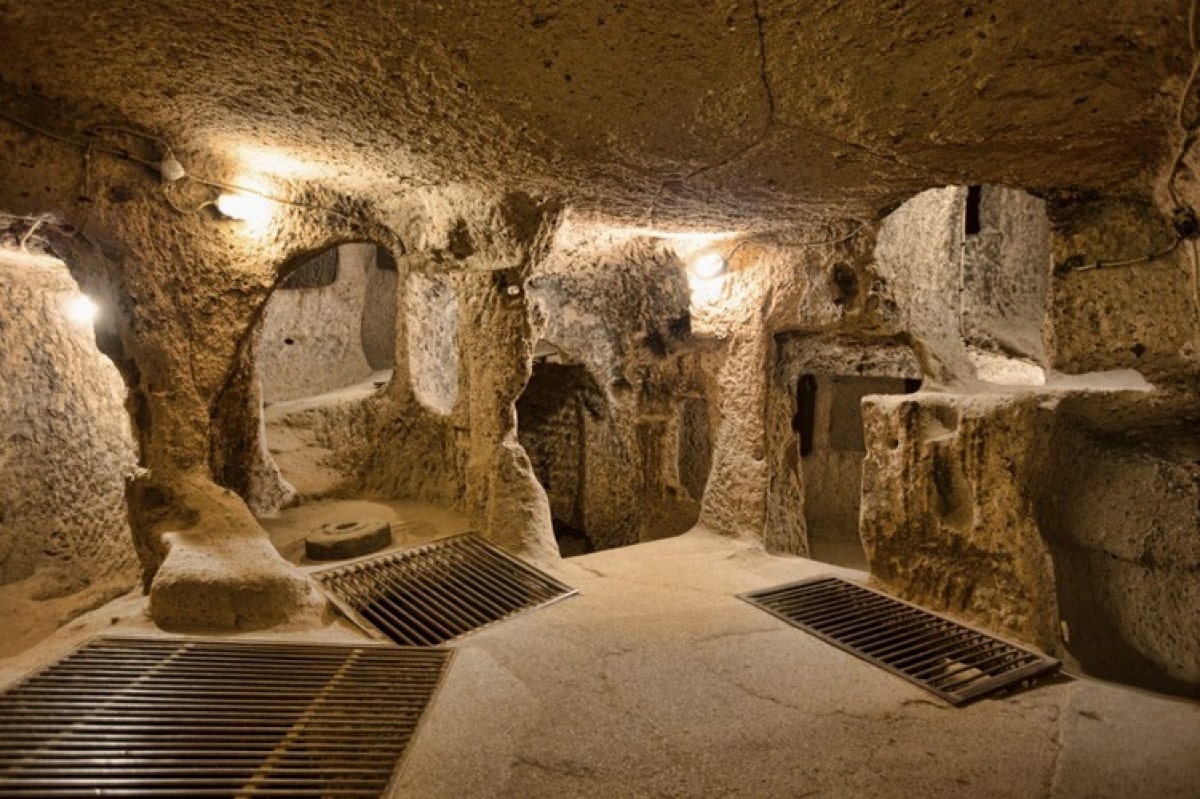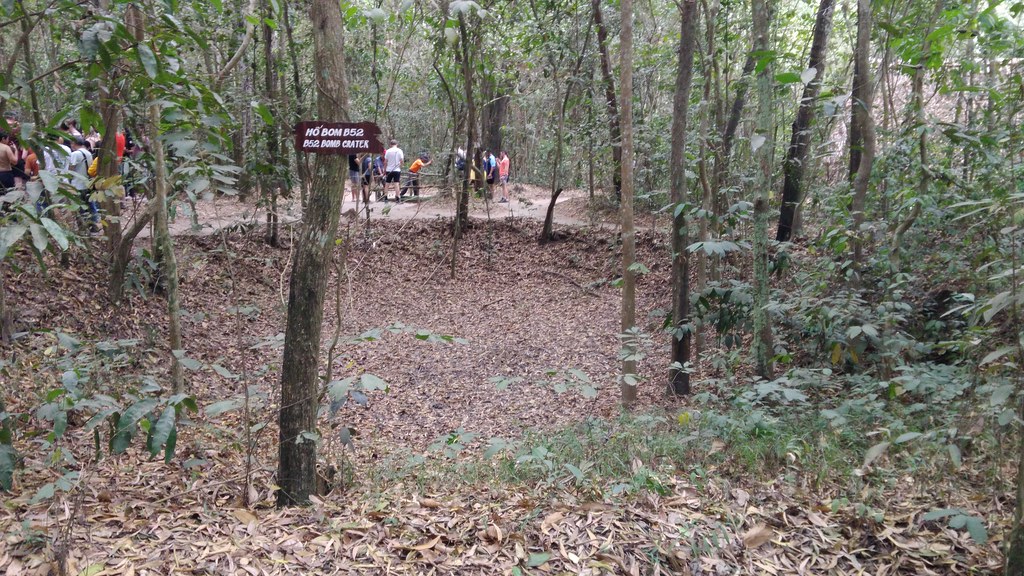Cu Chi Tunnels are among the most historically valuable areas in Vietnam. Thousands of people from all parts of the world visit it every year. The length of the tunnel network is over 250 kilometers in depth, and visitors might get a glimpse of the ingenuity and willpower of the people of Vietnam during the Vietnam War. Once used as a stronghold for the Viet Cong soldiers, the tunnels of Cu Chi house a huge ramification of passages built to resist enemy strikes and continue with effective guerrilla warfare.
The Cu Chi Tunnels, today in Vietnam, are preserved in memory, showing the hardships that Vietnamese soldiers and civilians faced. Visitors are allowed to walk through the tunnels and get a feel for daily life for the people who used the tunnels during the war.
The Location and Geography of Cu Chi Tunnels
Where are the Cu Chi Tunnels Located?
Cu Chi Tunnels are located about 40 kilometers northwest of Ho Chi Minh City. Therefore, it is an ideal day trip for busy tourists in this bustling city. In the Cu Chi District, the terrain provided perfect natural camouflage to the tunnels-thick forests and heavy vegetation made detection almost impossible during the war years.
Cu Chi Tunnels
Landscape Around Cu Chi Tunnels Vietnam
The geography around Cu Chi Tunnels Vietnam played a significant role in its functionality: the area was full of jungles and rivers, which easily concealed entrances to the tunnels; moreover, hard clay was the right soil for digging and maintaining tunnel structures. That is why the Viet Cong could build an underground system that became so functional and, for a long time, remained unnoticed by the enemy.History of the Cu Chi Tunnels
Origins of Cu Chi Tunnels
The beginning of the Cu Chi Tunnels dates back to the late 1940s during the war with French colonial forces. Originally, these were used for communications and to house supplies by Vietnamese resistance fighters. However, the tunnels greatly expanded during the Vietnam War: a place for living quarters, a command center, and even hospitals for the Viet Cong.Role of Cu Chi Tunnels in the Vietnam War
By the time the war in Vietnam escalated in the 1960s, this place, the Cu Chi Tunnel system, had become one of the key strongholds for the Viet Cong. These tunnels thus enabled the soldiers to make surprise attacks upon American and South Vietnamese forces and then disappear without a trace so as not to be caught. The tunnel network, connecting villages and going deeply within enemy-occupied territory, gave the Viet Cong a tremendous advantage in the region.Cu Chi Tunnels in the Vietnam War
The Importance of Cu Chi Tunnel Vietnam for Guerrilla Warfare
The Cu Chi tunnels, therefore, played an important part in Viet Cong guerrilla warfare: within the network of these tunnels, soldiers could emerge quickly, attack, and retreat underground to leave the enemy in a complete state of disorientation. This tactic made it virtually impossible to predict when and where an attack could be staged by U.S. forces.Strategic Importance to the Viet Cong
The Cu Chi tunnel was not just a shelter but a well-thought-out, self-sufficient tunnel network with storage facilities, weapons-producing factories, kitchens, and even hospitals. Since the Viet Cong was placed strategically with the tunnels, they had the potential to move supplies, live out of reach from aerial attacks, and maintain lines of communication without being discovered. Despite the heavy bombing campaigns, Cu Chi Tunnels remained a key cog in the resistance machinery of the Viet Cong.Tunnel Construction and Design
Structure of the Cu Chi Tunnels System
The Cu Chi Tunnel system is multileveled and runs from 3 to 10 meters deep. The network consists of three levels: the top for daily operations, others as living quarters, and escape routes. Such tunnels were built capable of bearing the weight of tanks and the impact of bombing to an almost insurmountable extent.How Were the Tunnels Built?
Cu Chi Tunnel Vietnam was built as a wonder with less arsenal and artillery, using simple tools and human power. The local villagers, along with the Viet Cong soldiers, were engaged in digging the land themselves with the help of a spade and baskets. Most of the tunnels were less than one meter wide, just enough for one person to pass through; this also restricted the entry of larger enemies into this tunnel.Life Inside Cu Chi Tunnels
Daily Life of Viet Cong Soldiers
People’s lives in Cu Chi Tunnels were hard; months underground and years without seeing daylight, the health issues were caused by a lack of sunlight and difficulties of consuming minimal food and water, constant threats from the enemy forces.Challenges of Living in Cu Chi Tunnels
Cu Chi Tunnels Vietnam is very tough to live inside; the narrow tunnels often get hot and airless, devoid of many sanitation facilities, and infested with rats, insects, and deadly snakes. But all these raging obstacles could not remove the tunnels from their vital role in the war strategy of the Viet Cong.Tools and Equipment Used Inside the Tunnel
Everything in the tunnels was used – the crude weapons to stoves, which would diffuse smoke over large areas of land to evade the traps set for the enemy soldiers. Each tool was carefully designed in the interest of maximizing the tunnels’ defensive possibilities while minimizing exposure to enemy forces.Cu Chi Tunnel Tour Experience
Popular Attractions at Cu Chi Tunnels
Among the other activities at the Cu Chi Tunnel in Vietnam, there are several popular attractions that one can see on a visit to the tunnels:- B-52 Bomb Craters: These craters are large and form part of the American bombings of this area.

B-52 Bomb Craters
- Hidden Entrances: Small and really camouflaged tunnel entrances give an idea of how difficult it would be to trace the presence of the Viet Cong.

Hidden Entrances
- War Memorabilia: A selection of weapons, traps, and military machinery that provides an insight into life at war.
Guided Tours and Available Activities
There are guided tours available through many tour operators in the Cu Chi Tunnels. Expert guides take visitors through and are fully qualified to give in-depth information on the tunnel’s history and significance. Many tours include the opportunity to fire the wartime AK-47, for example, on a nearby shooting range.Nearby Attractions to Cu Chi Tunnel
Must-See Locations Around Cu Chi Tunnel Vietnam
Among the Cu Chi Tunnels, a few other notable attractions in this city are:- Cao Dai Temple: This is one of the most unique religious structures that combines the concepts of Buddhism, Taoism, and Christianity together.
- Tay Ninh Holy See: Cao Dai religion headquarters consists of a couple of vibrant-colored and highly ornamented buildings and archways.
- The Mekong Delta: Some hours from there, one can see the wide area of the Mekong River, rice paddies, and floating markets.

Mekong Delta
Day Trips from Cu Chi Tunnels
For many visitors, a visit to the Cu Chi Tunnels is combined in a day with either a trip to the Mekong Delta or to the nearby Ben Duoc Memorial Temple, which honors the Vietnamese soldiers who died during the war. These day trips give a much better understanding of the richly diverse cultural and historical landscape of Vietnam.Conclusion
The Cu Chi tunnels form one of the most significant parts of the history of Vietnam, underlining the ingenuity and persistence of its people during one of the darkest eras in the nation’s history. Visiting these tunnels gives the visitor an idea of how dire the situation was in which both soldiers and civilians had to exist, and affords the visitor a chance to go on a unique journey back in time.
Therefore, for a history enthusiast or even a casual tourist, the experience of Cu Chi Tunnel Vietnam will remain in the mind and help generate a proper understanding of how resilient the determination of the Vietnamese people was for the independence of their motherland.
